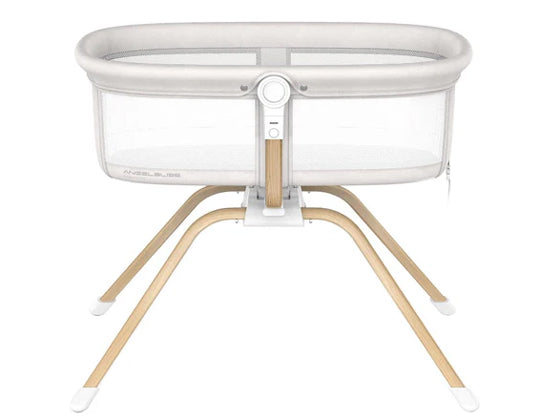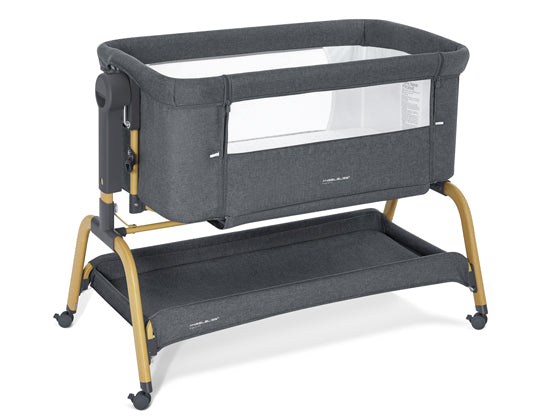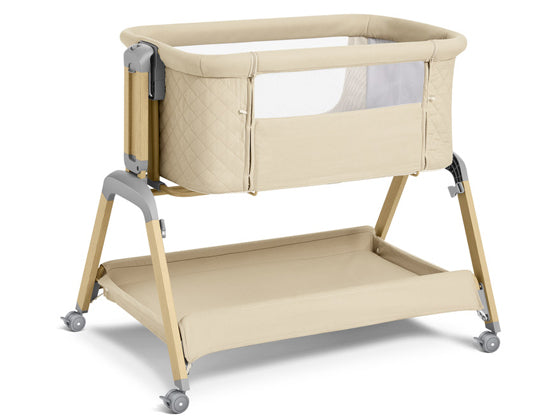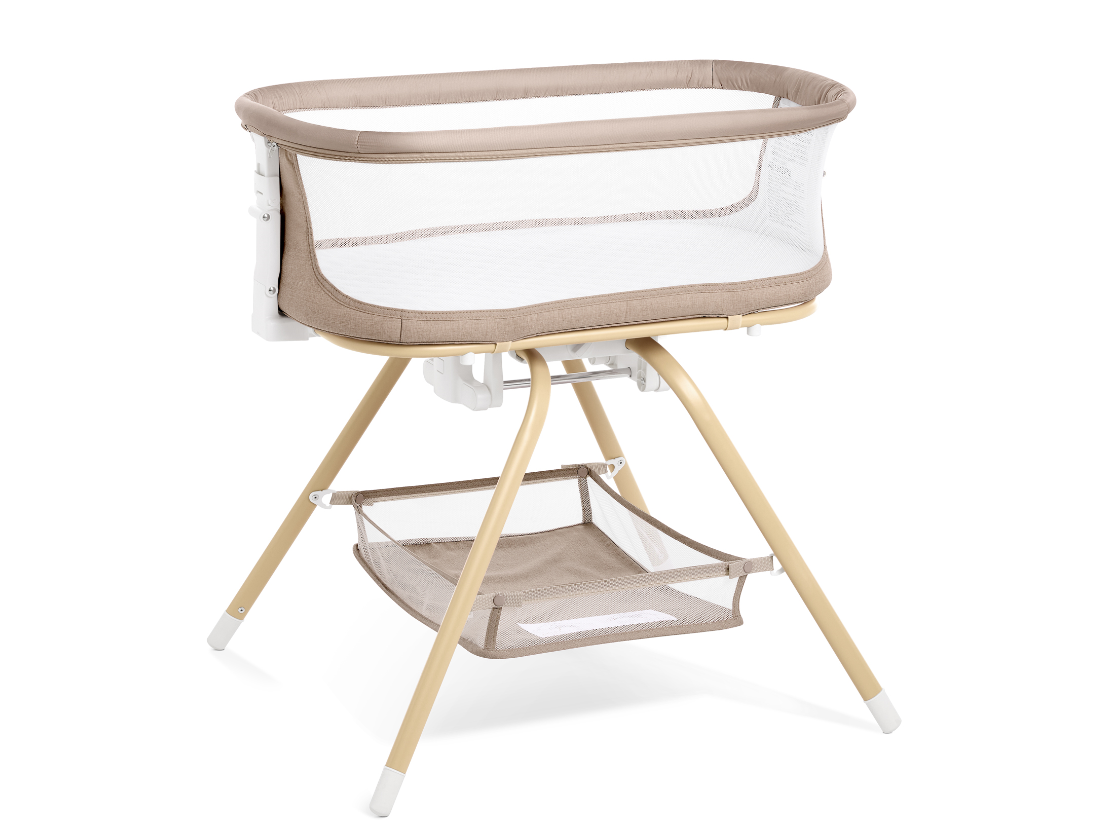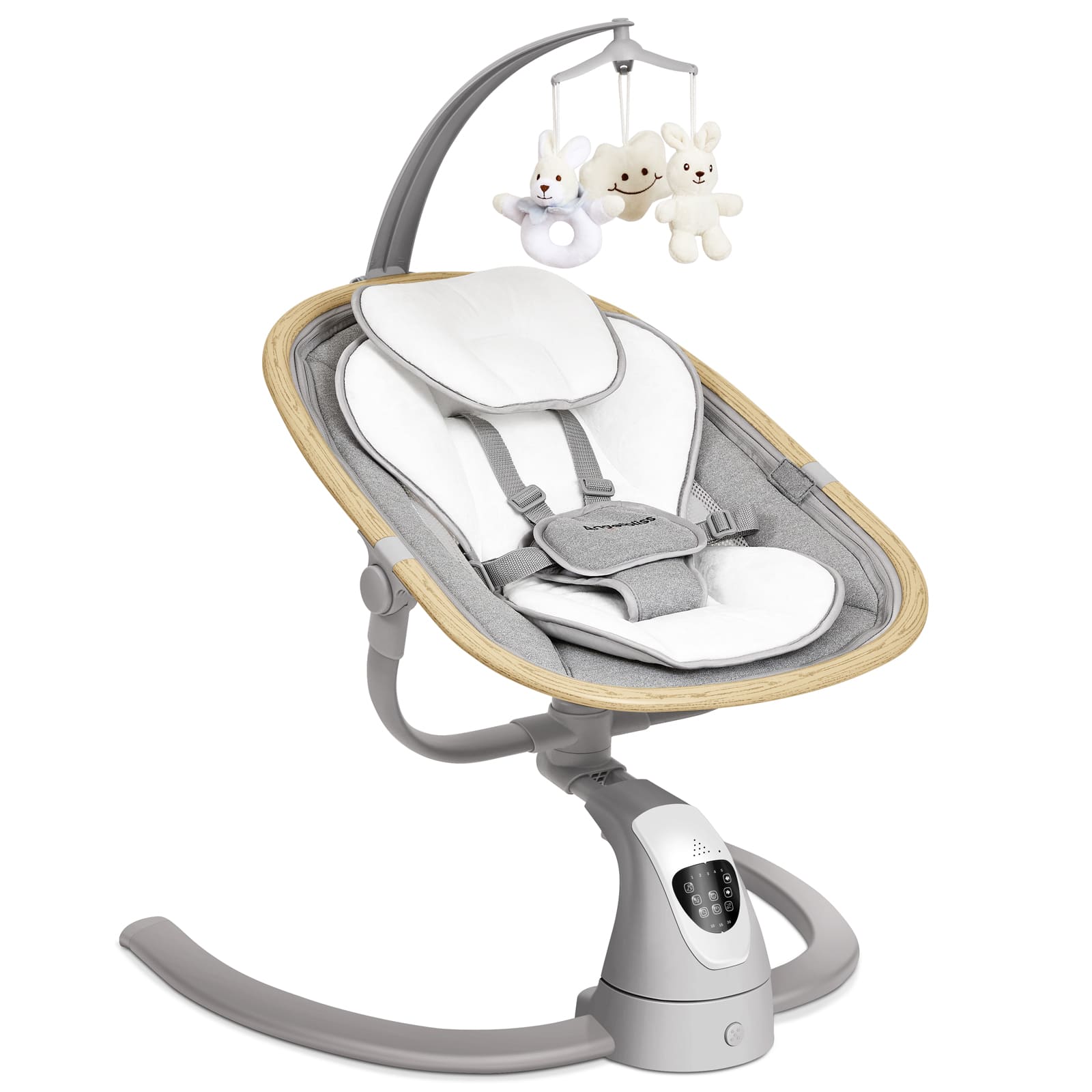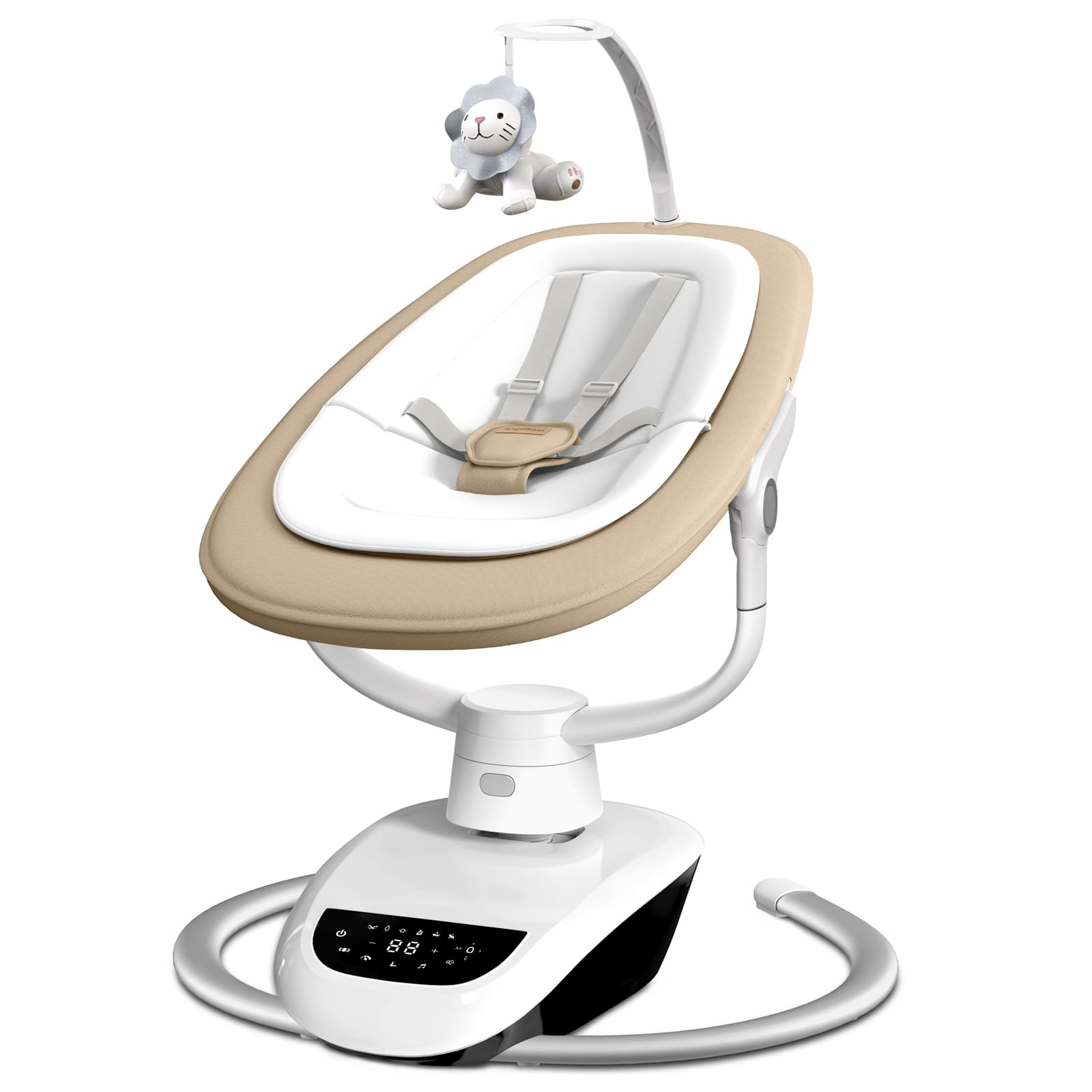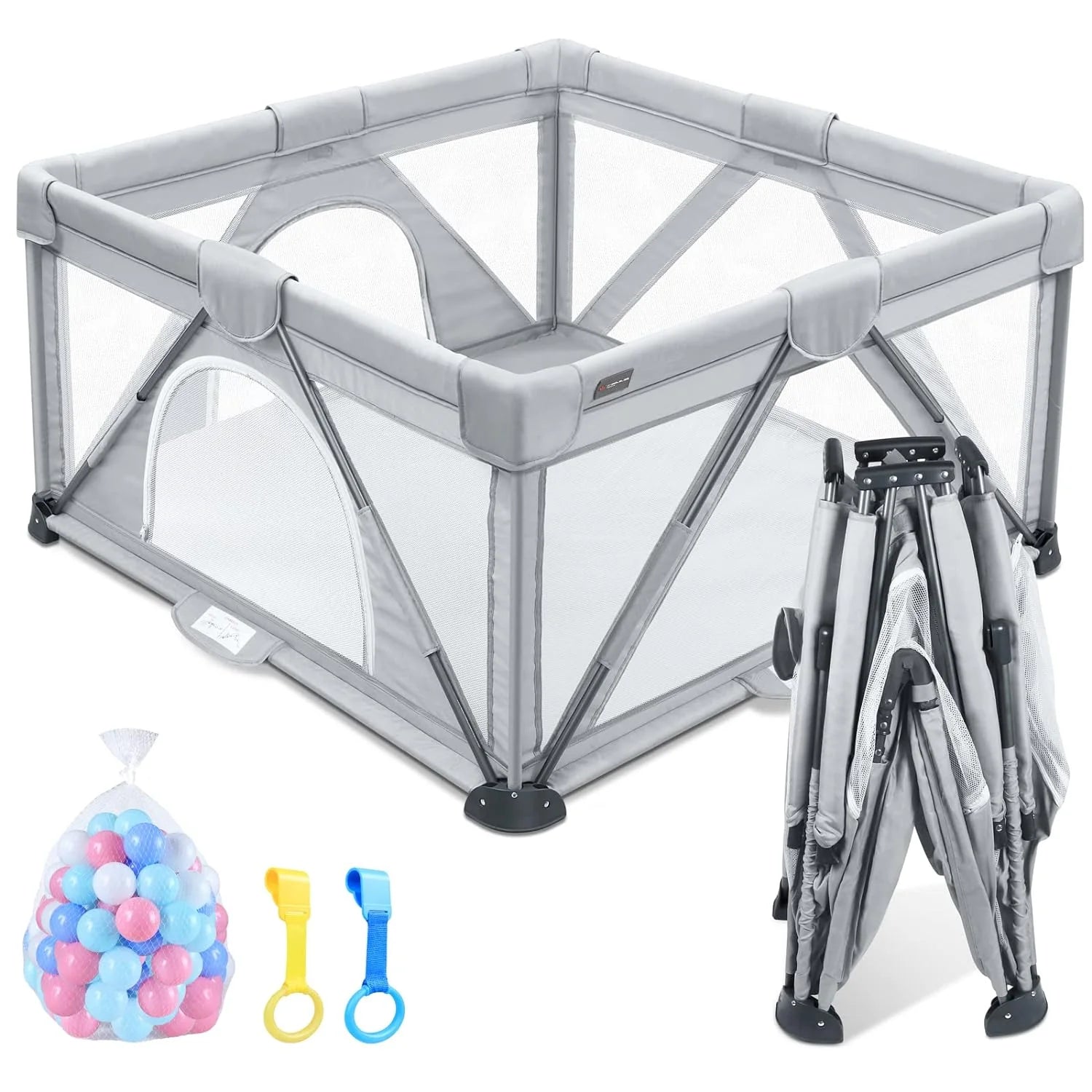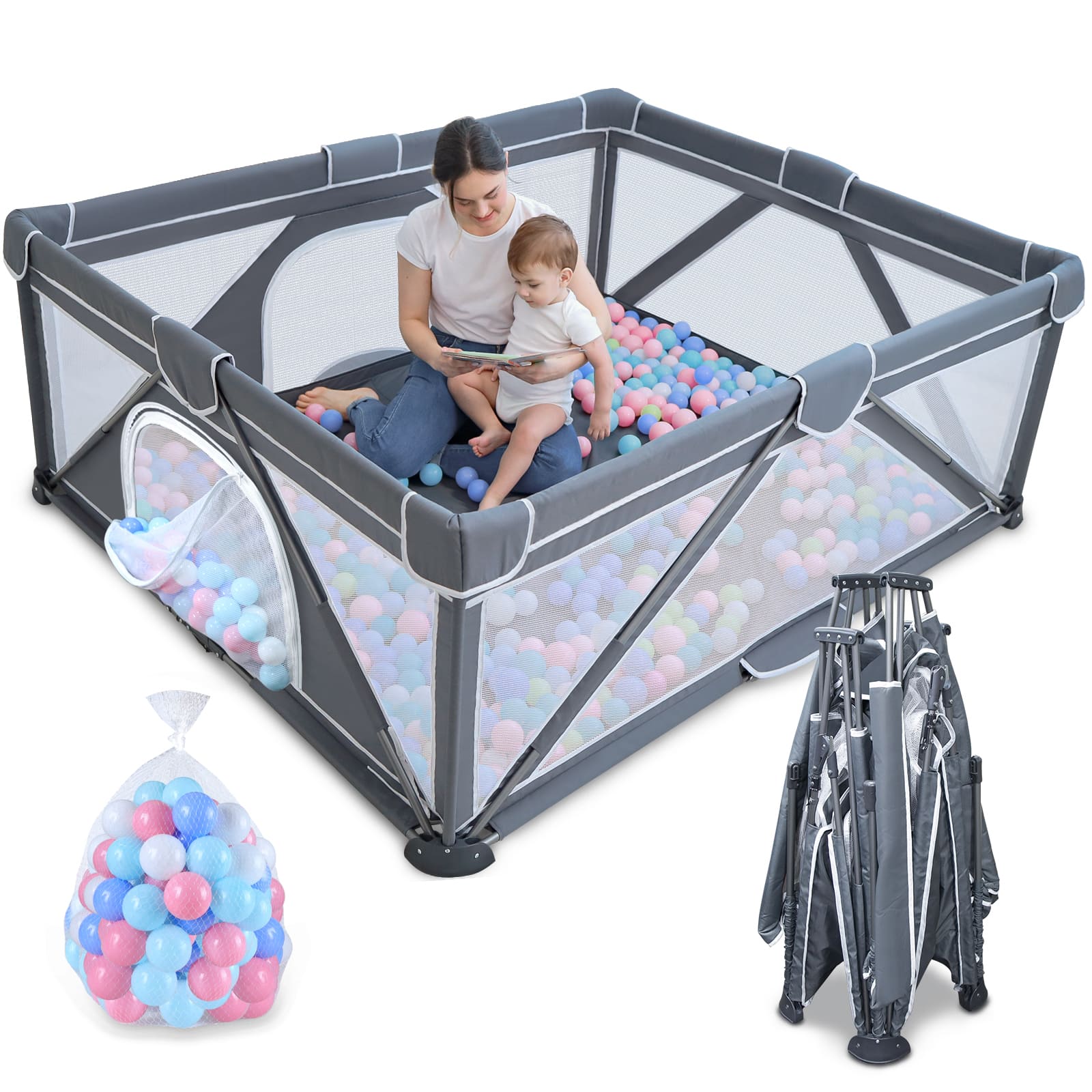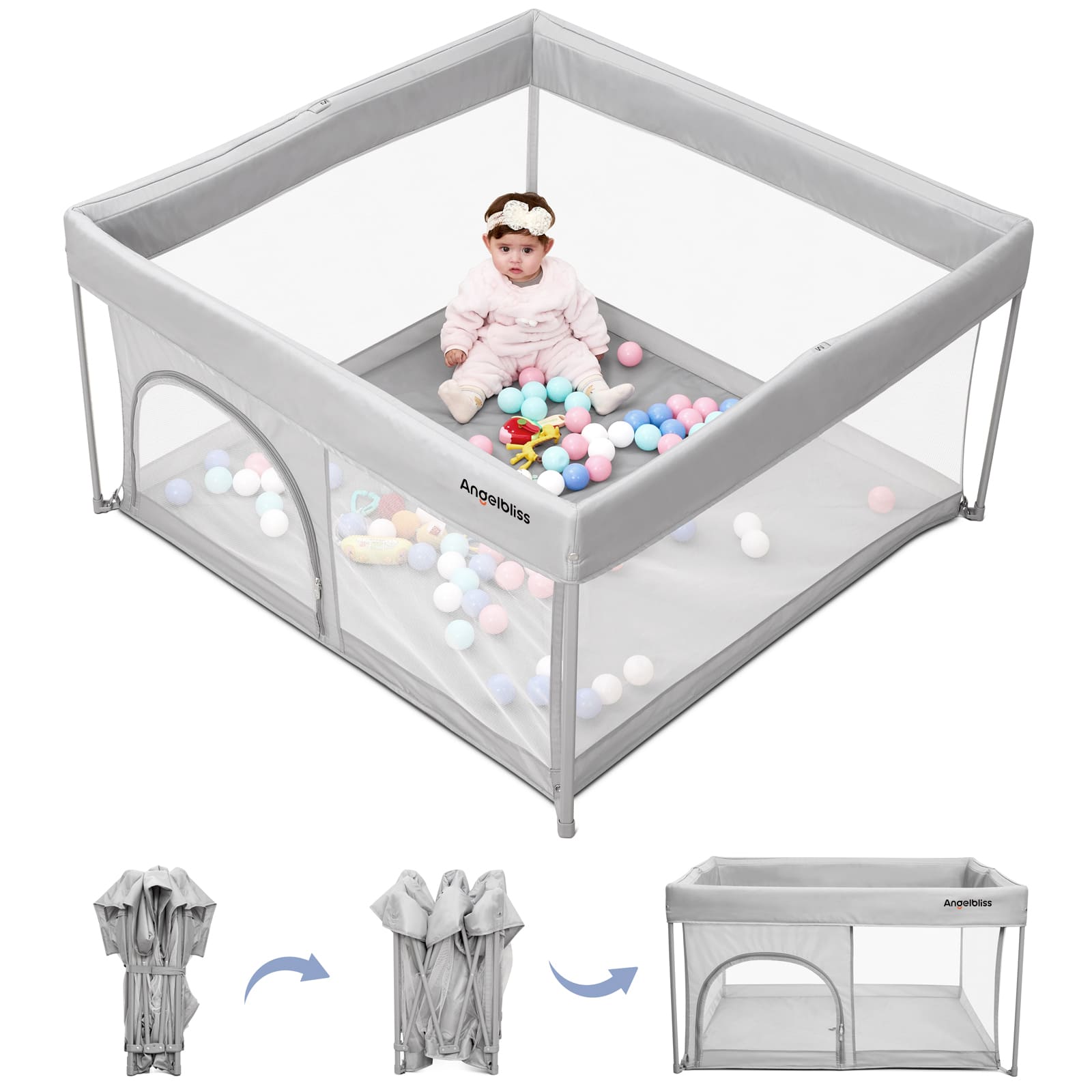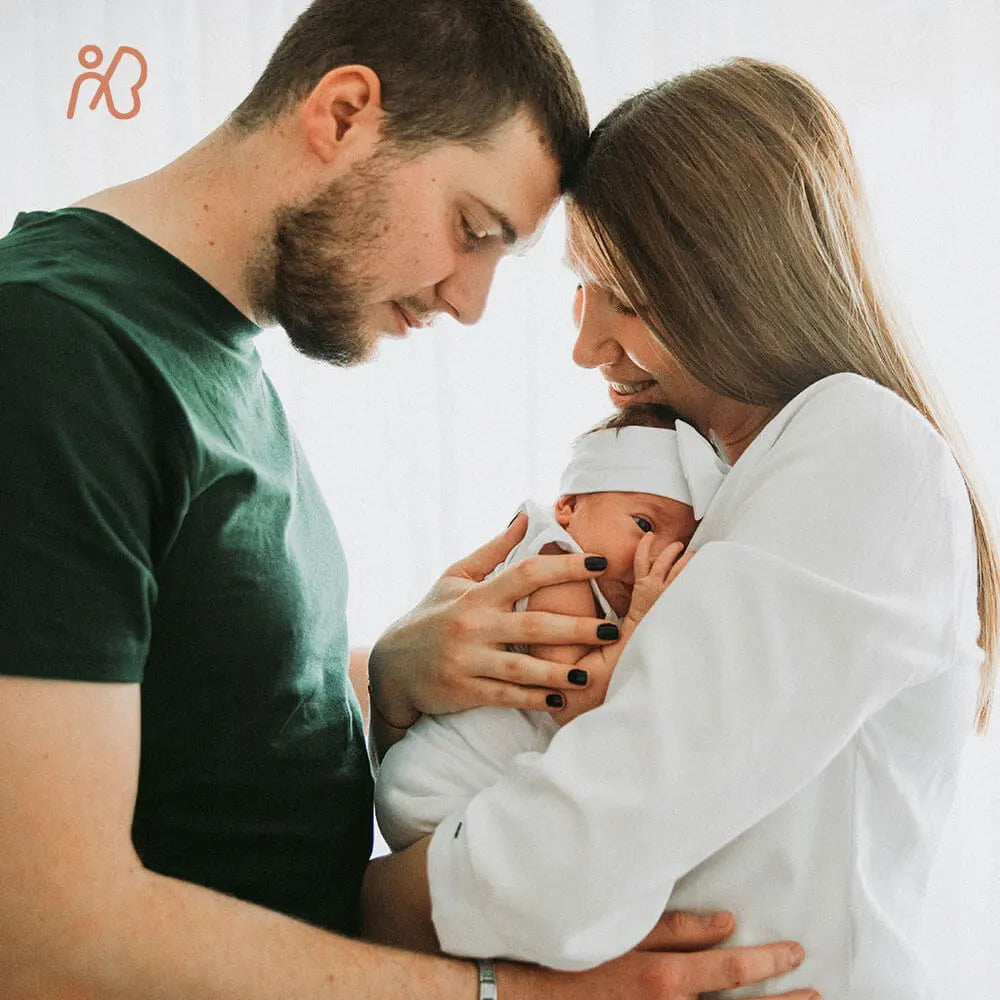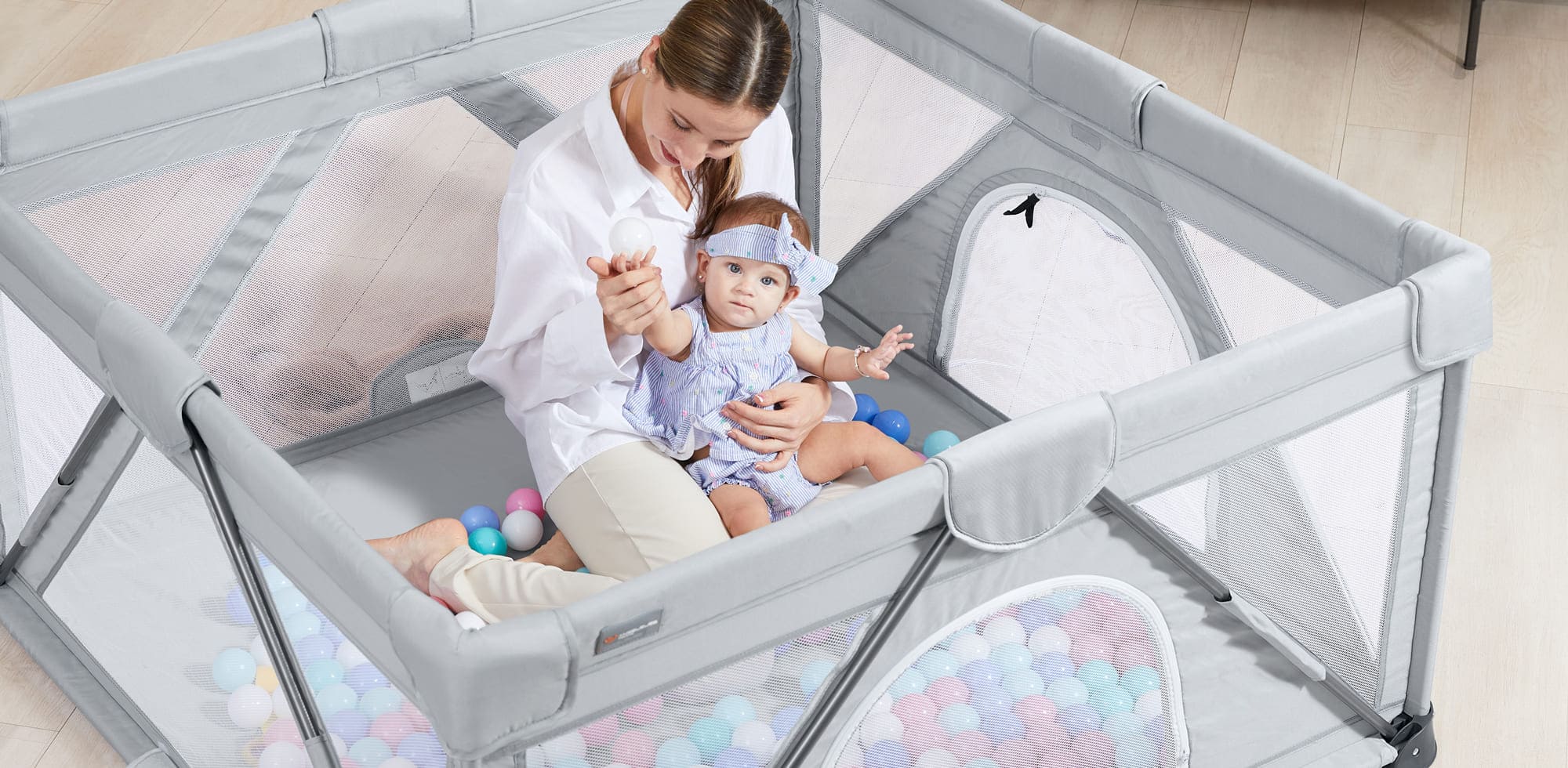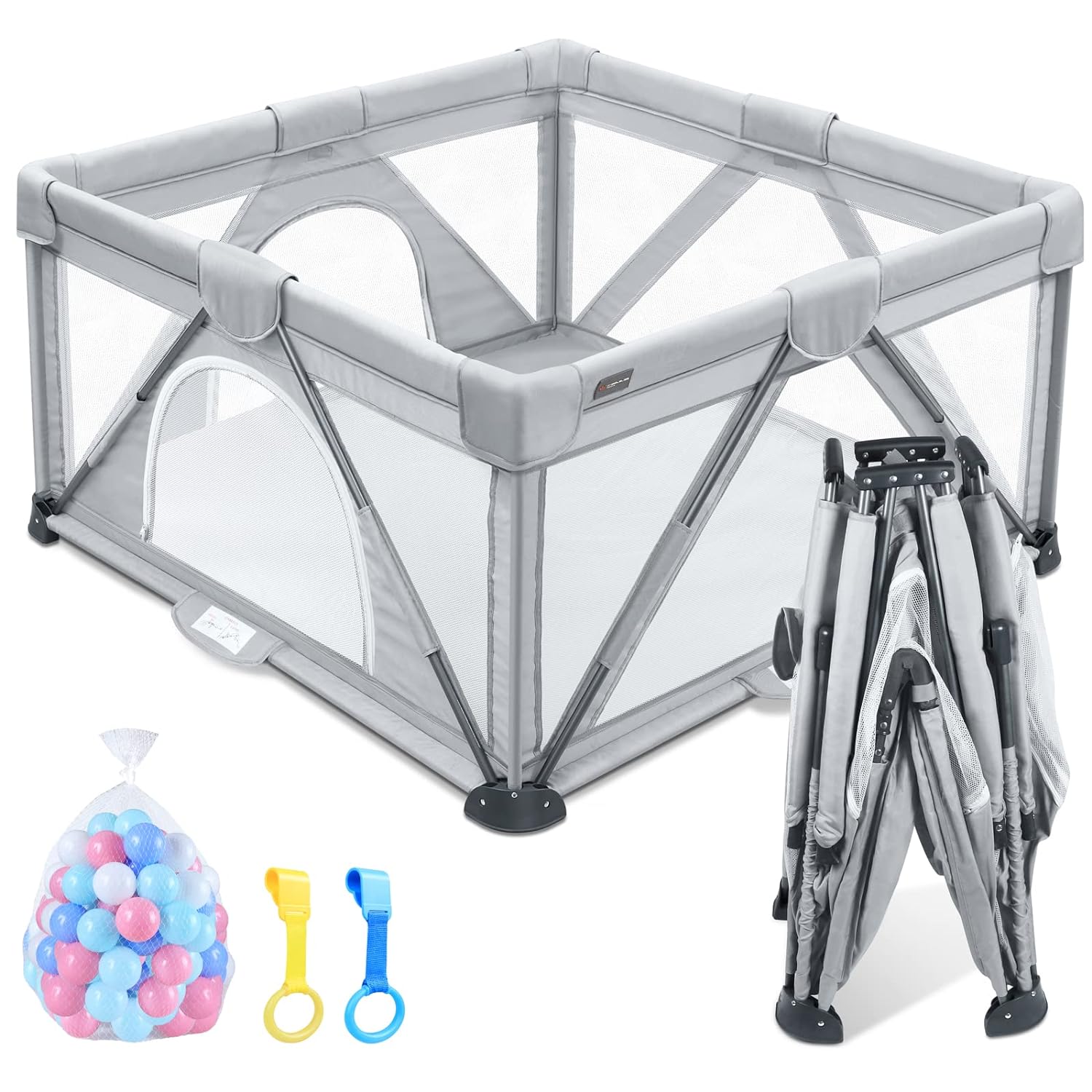
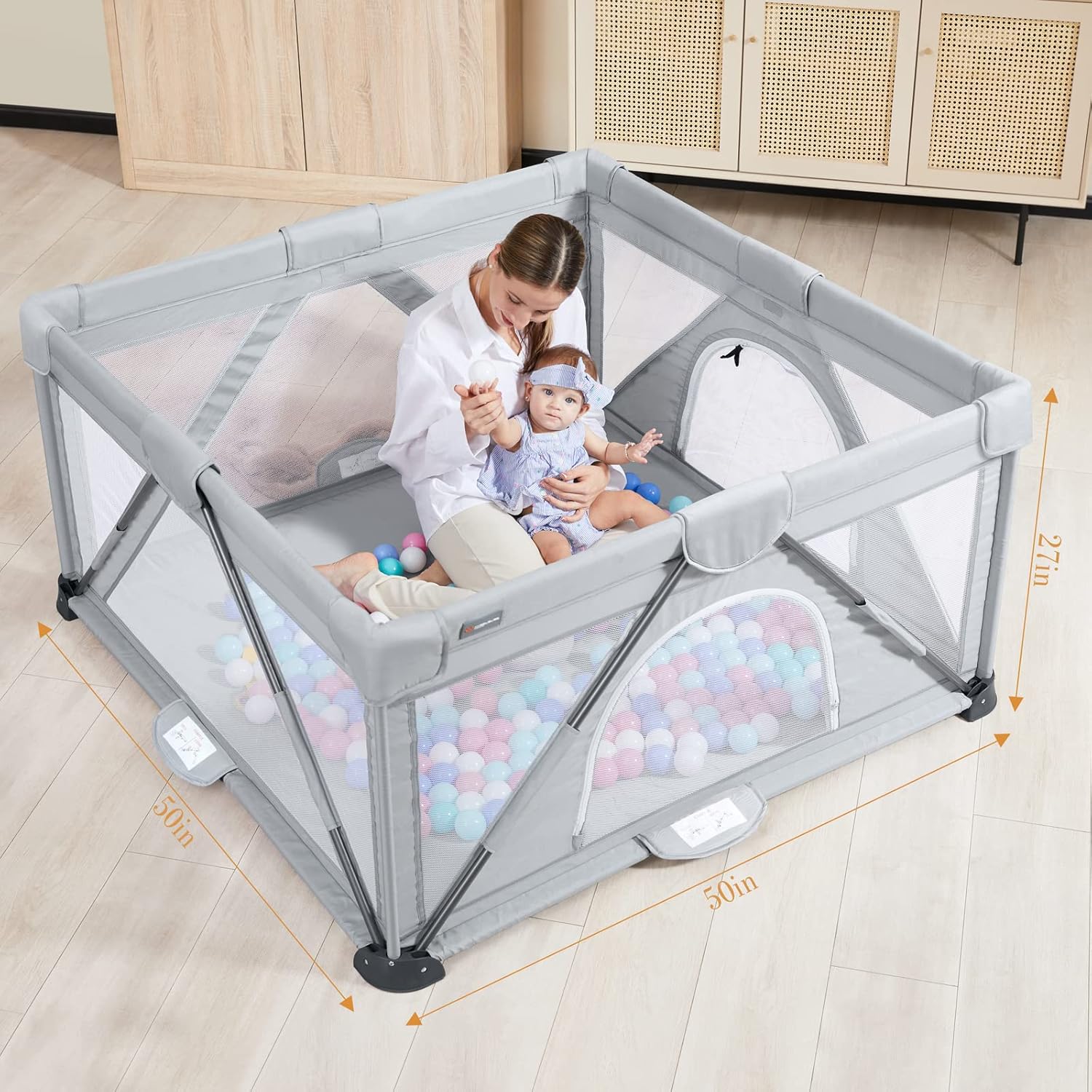
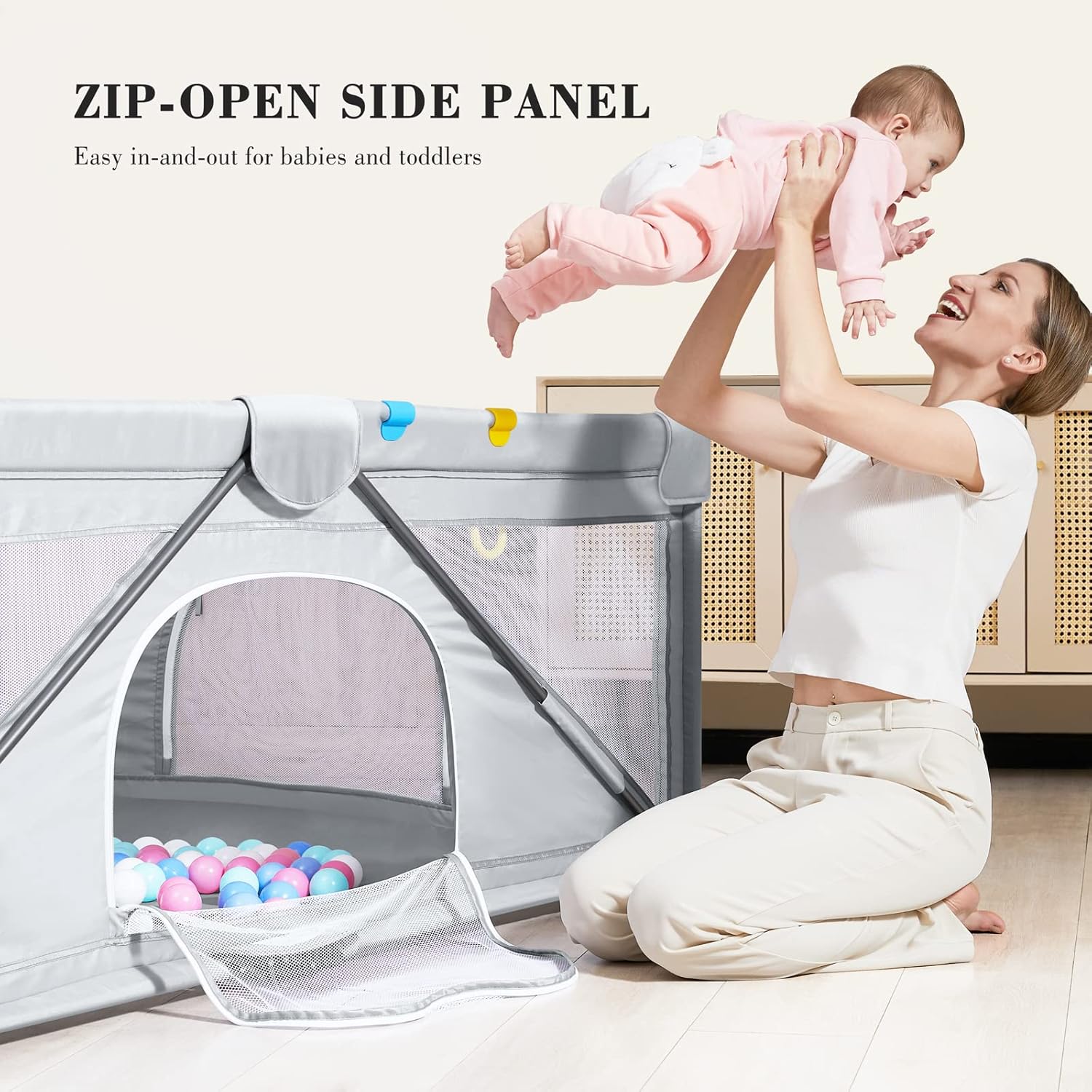
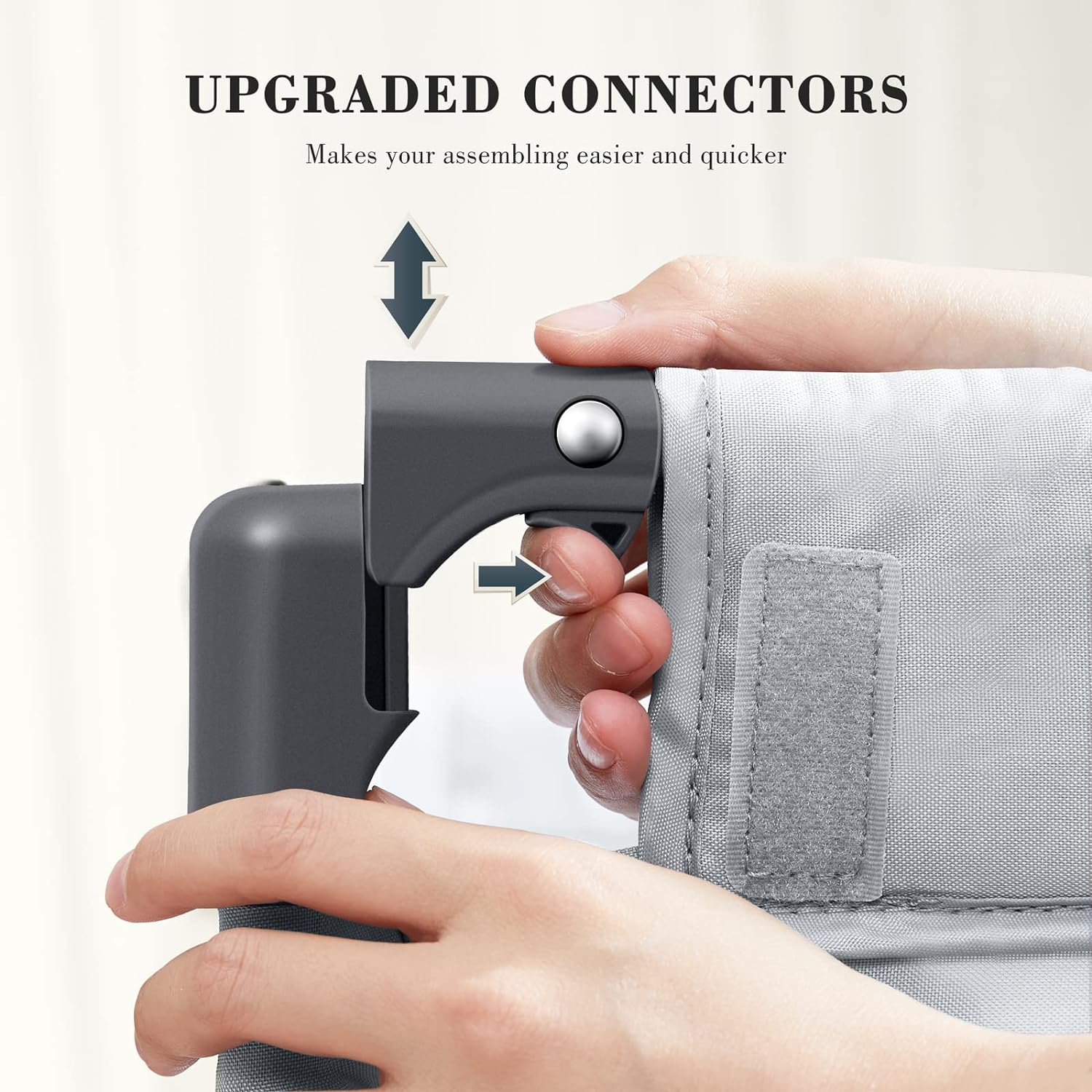
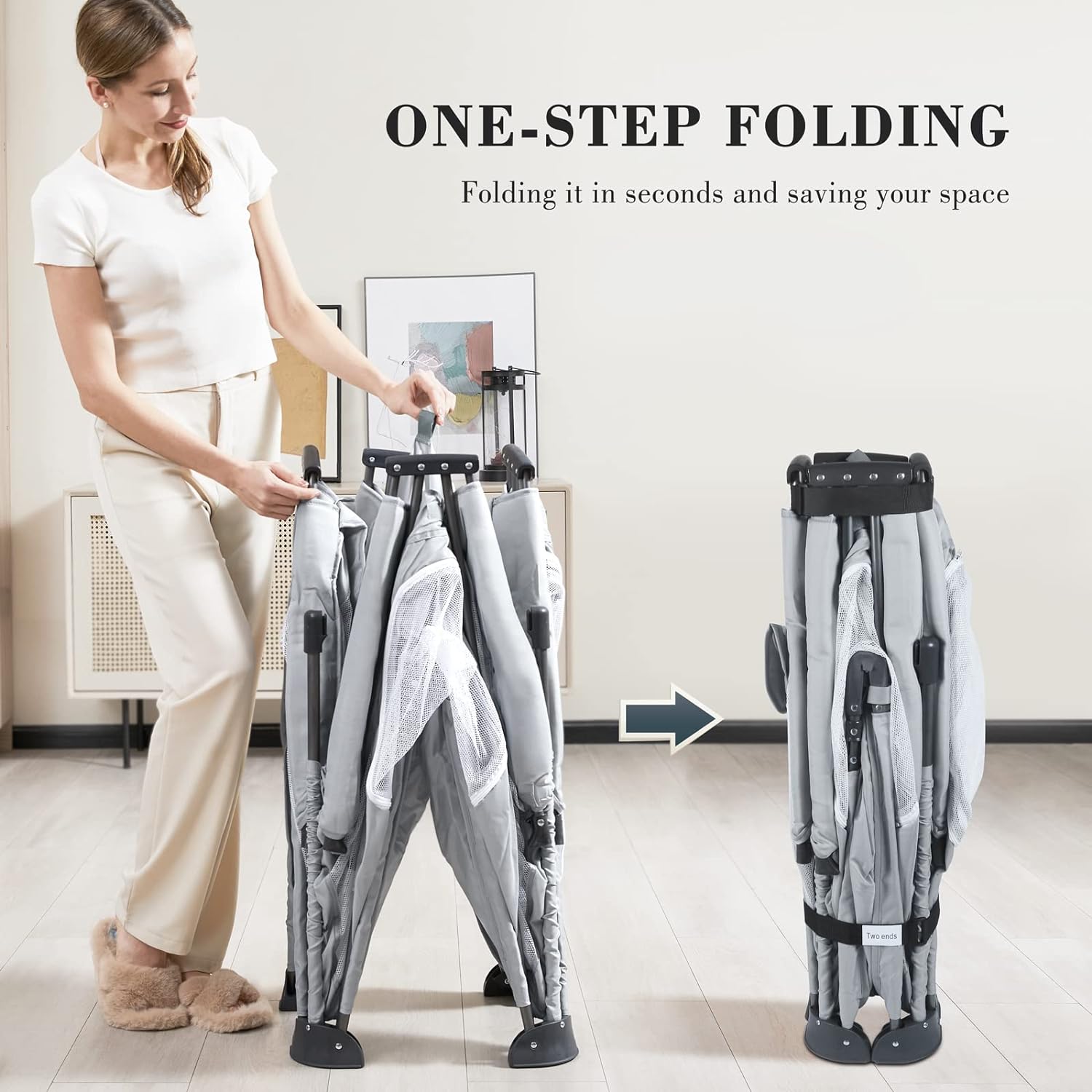
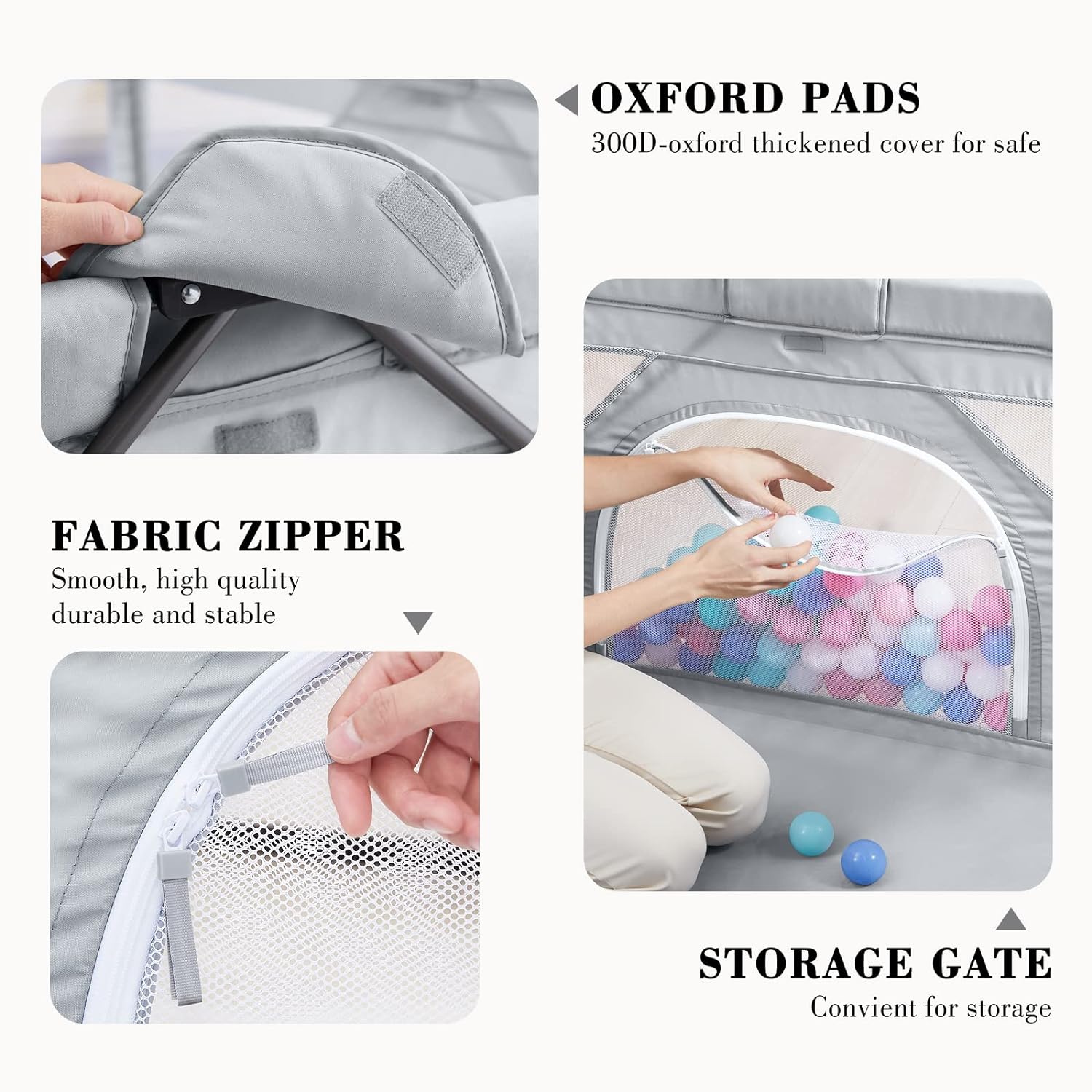
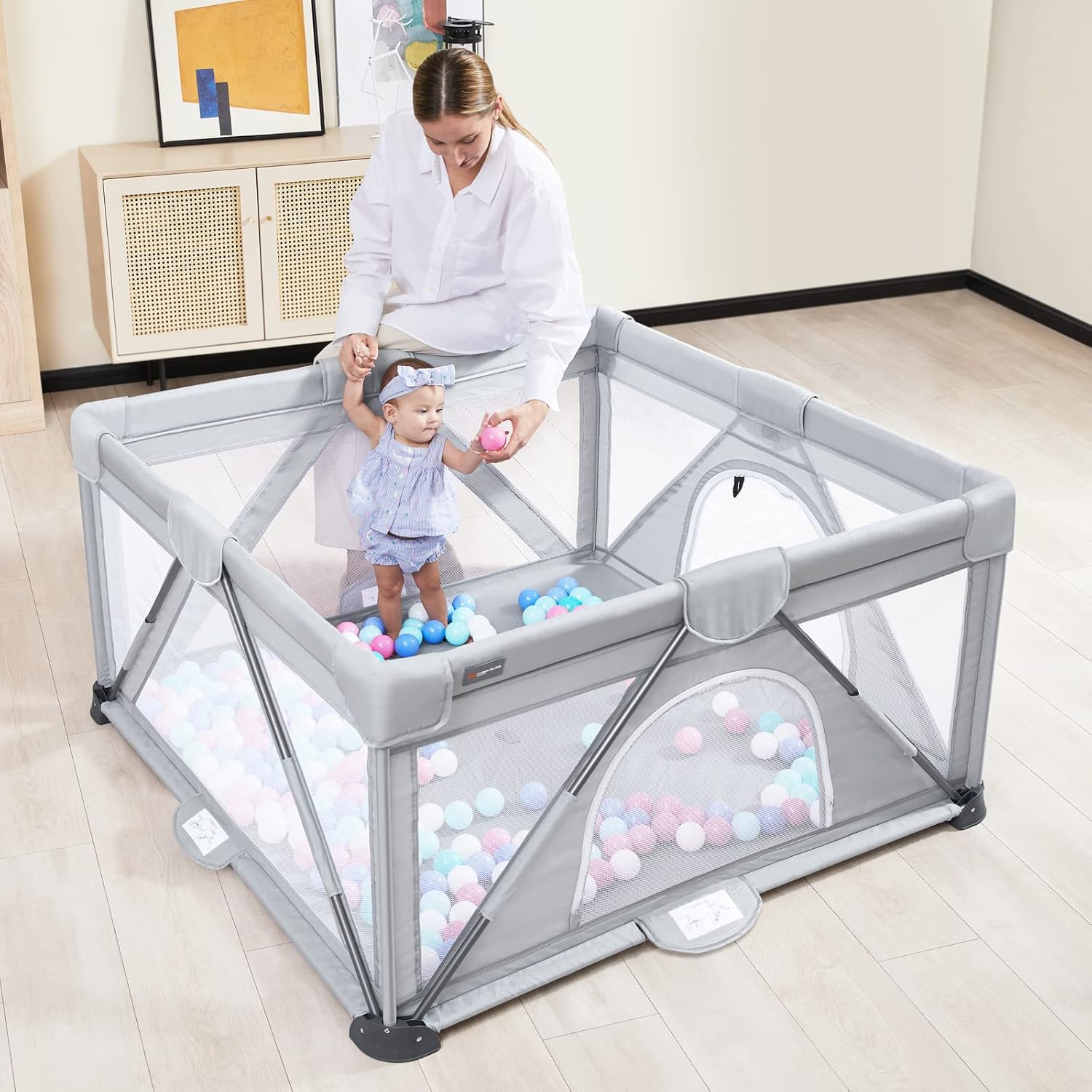
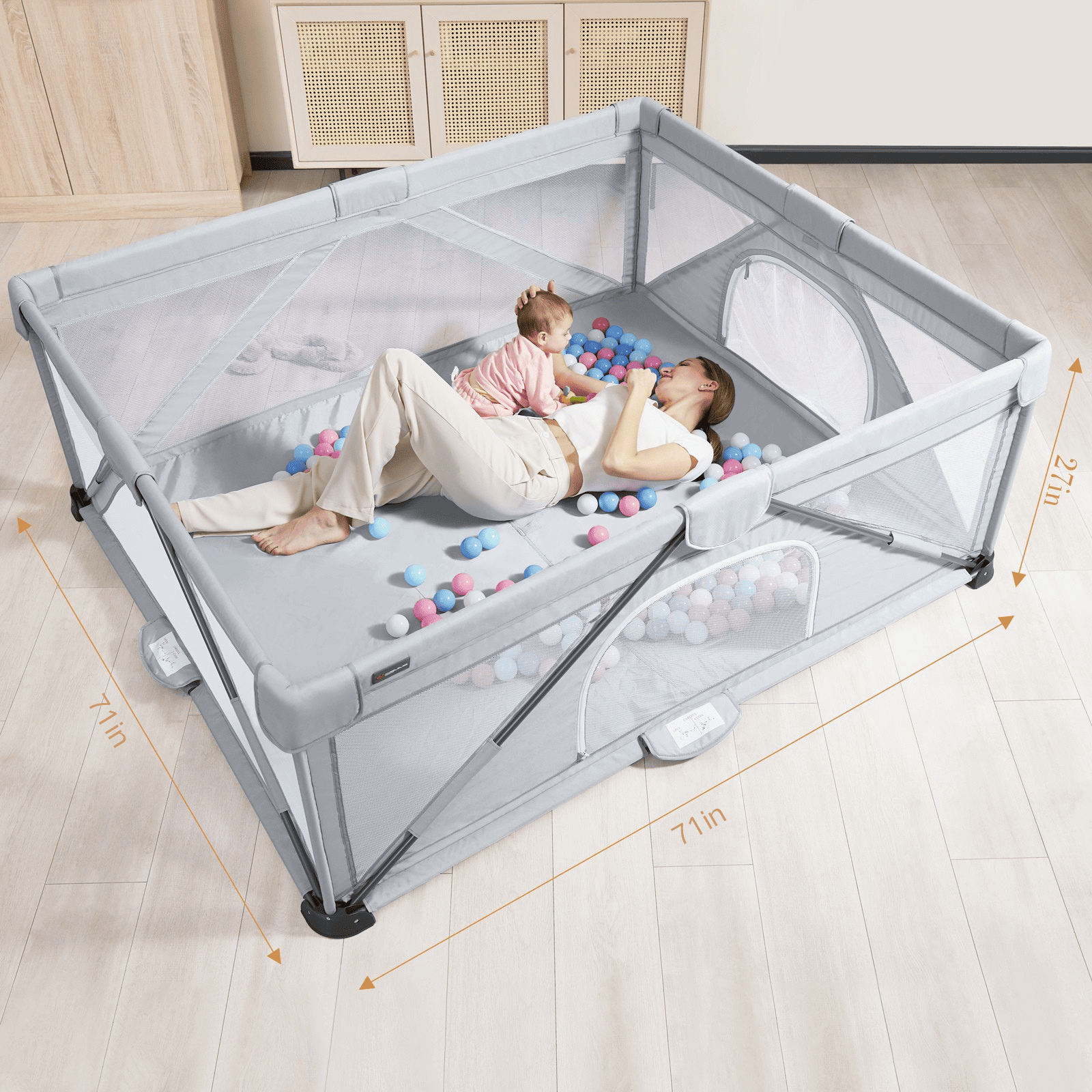
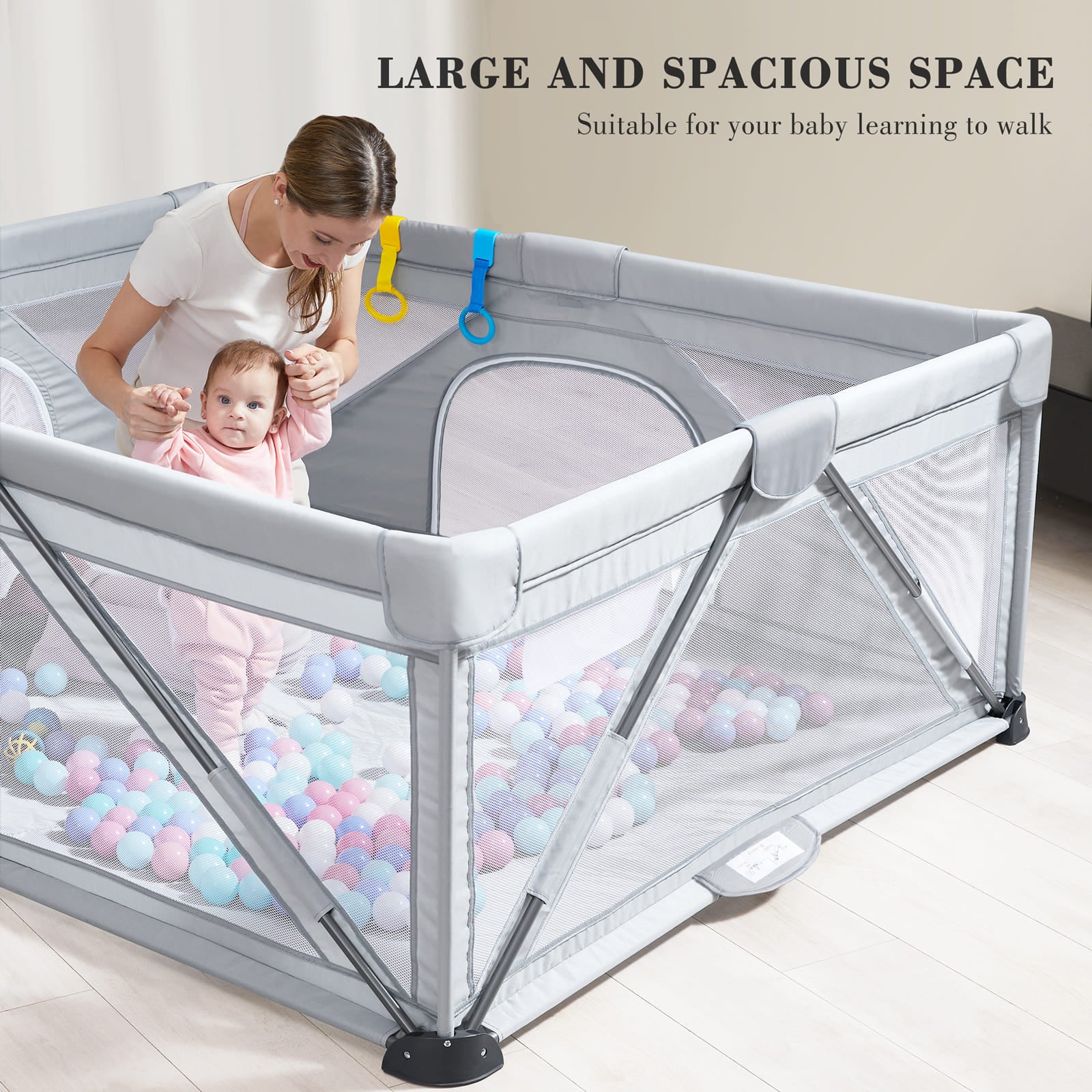
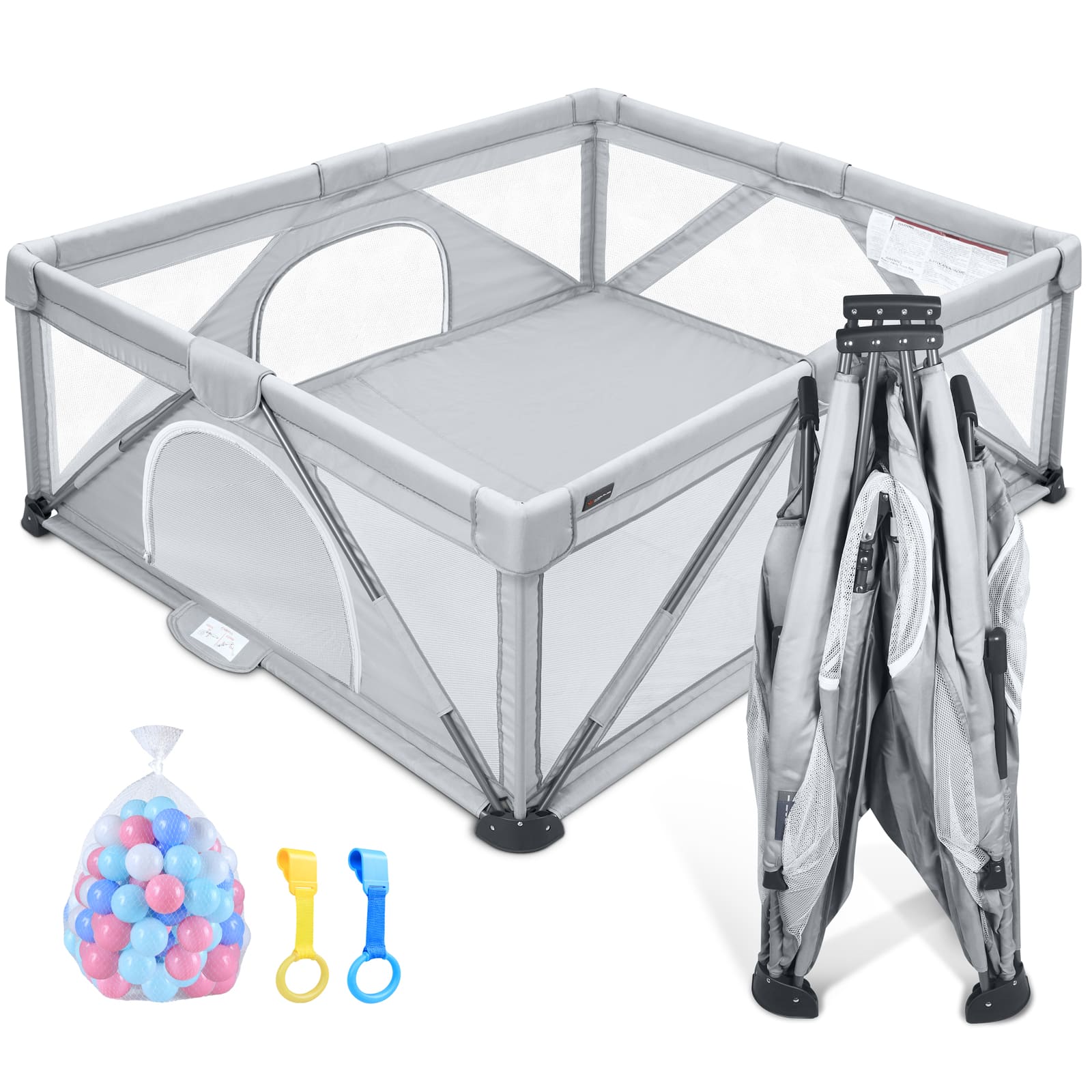
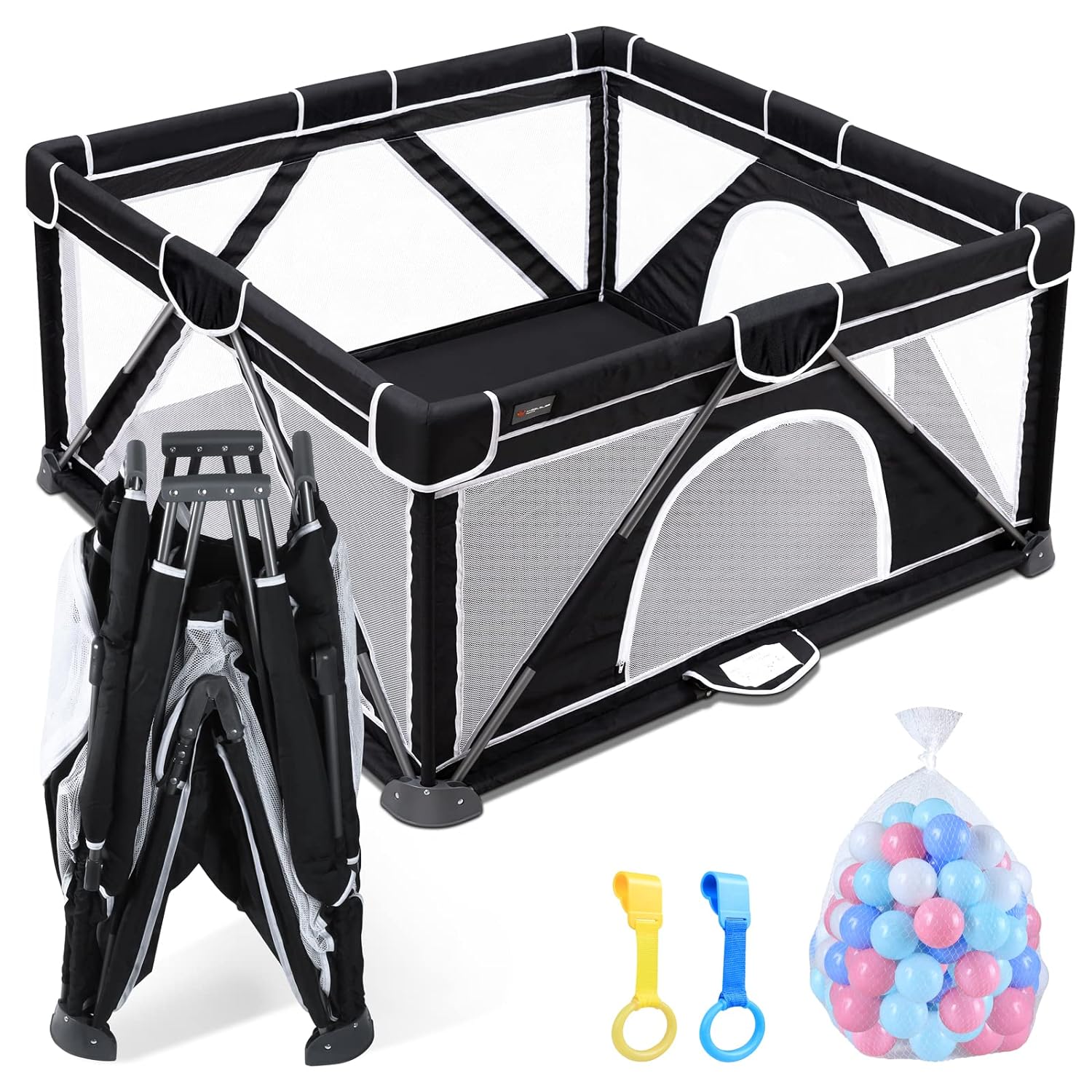
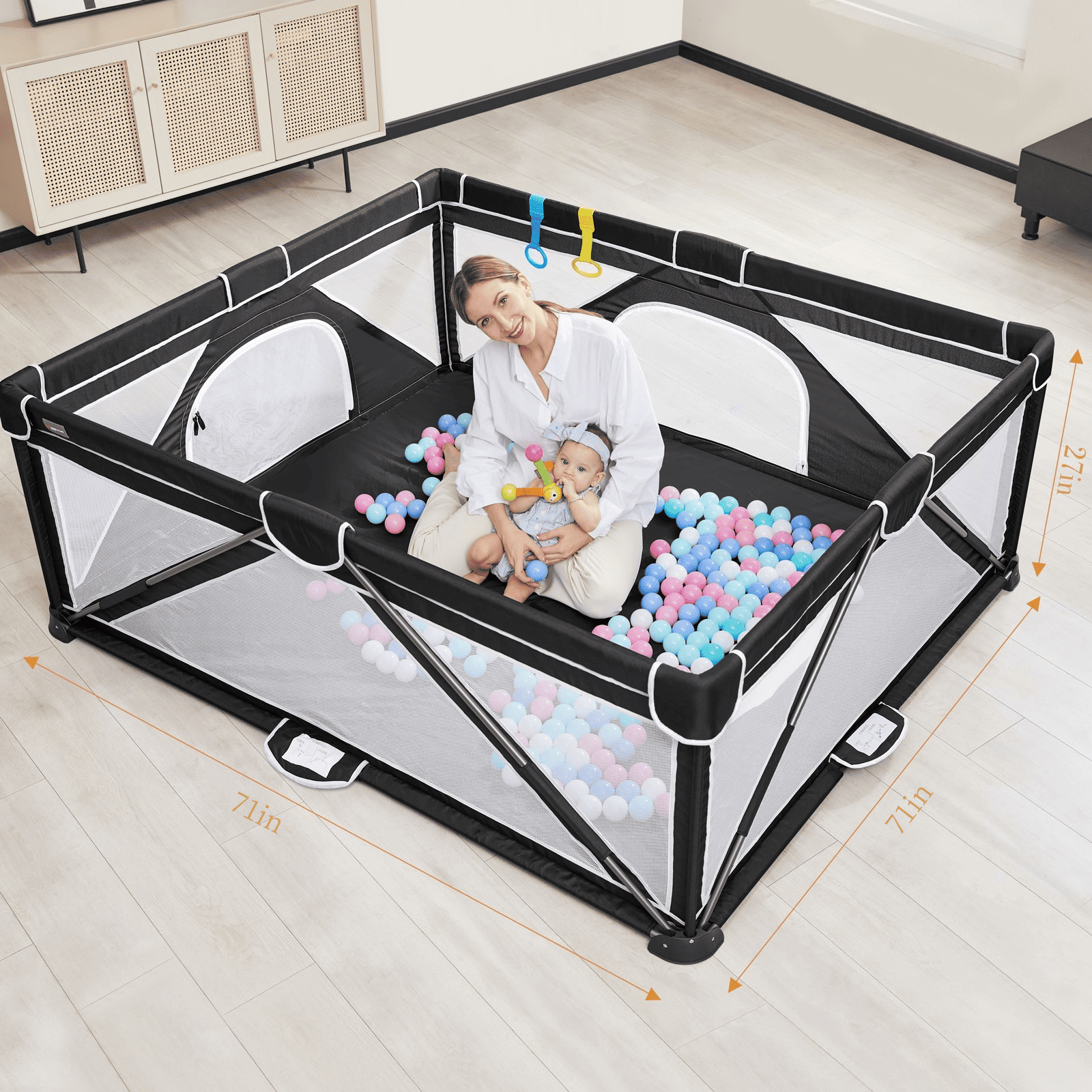
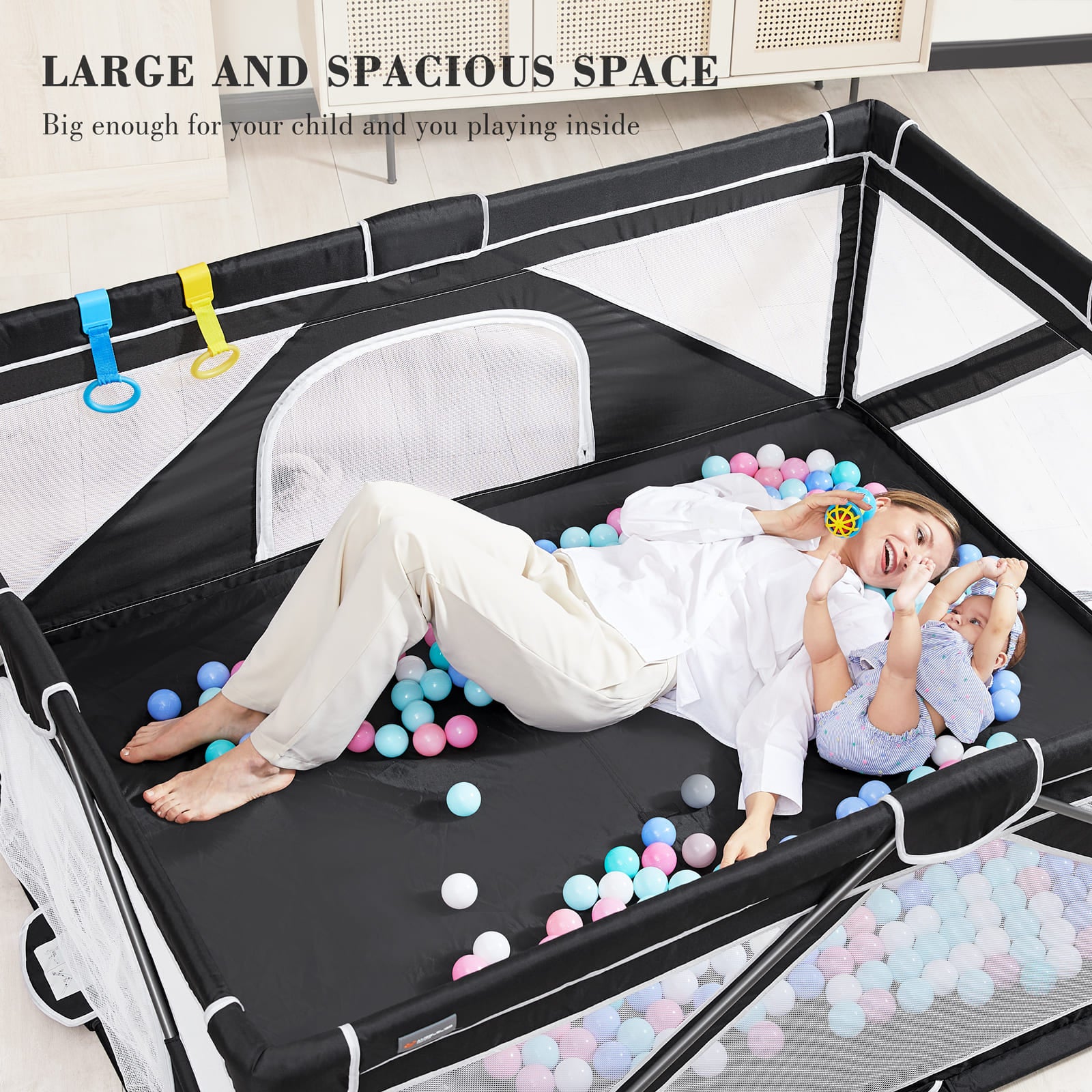
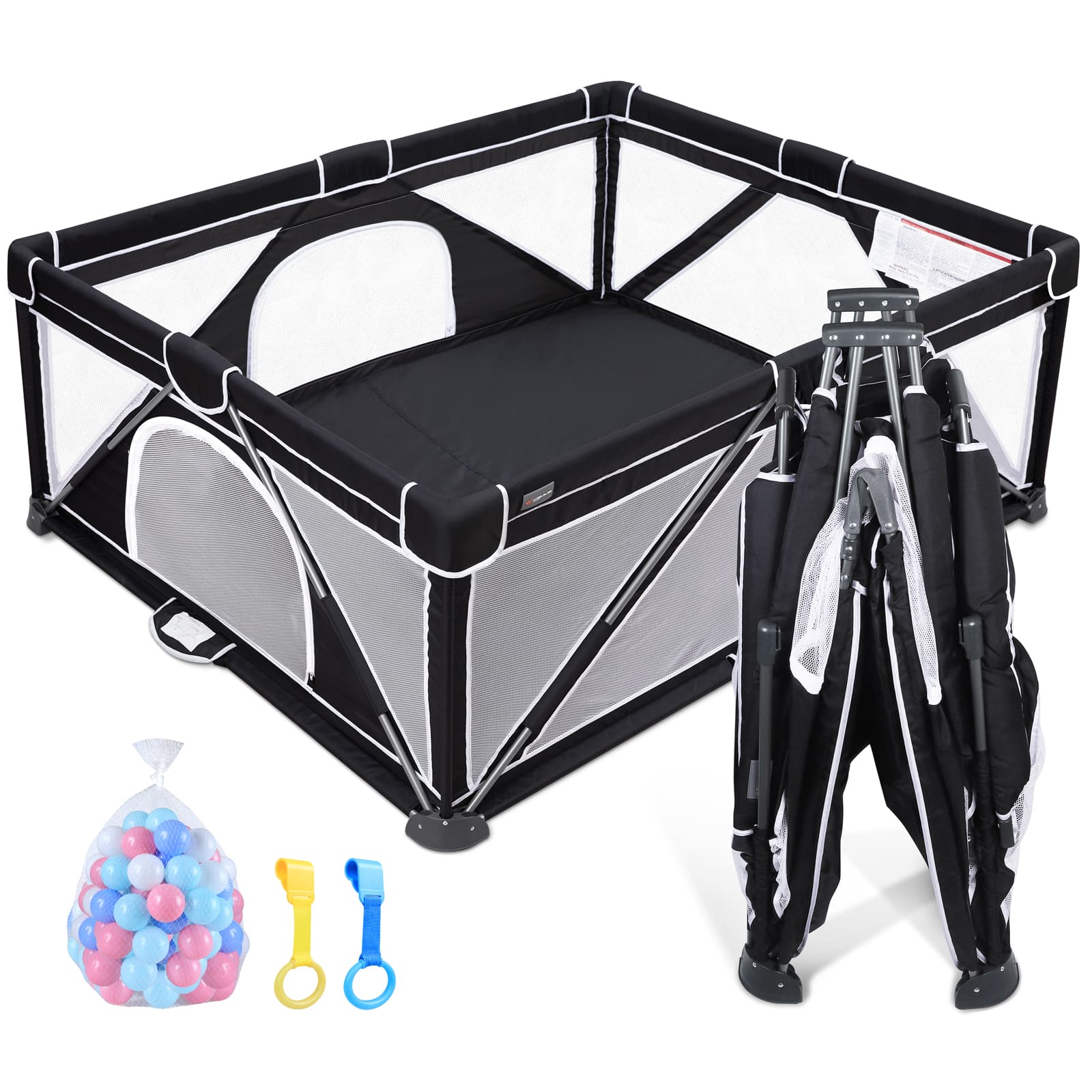
Foldable Baby Playpen BP01
- Foldable Baby Gate Playpen
- Safety Material to Release Parent's Hands
- Pack-N-Play Baby Fence
- High-quality Accessories
- 360°Full Vision Design
- Compact for Travel




Choose options
- Foldable Baby Gate Playpen
- Safety Material to Release Parent's Hands
- Pack-N-Play Baby Fence
- High-quality Accessories
- 360°Full Vision Design
- Compact for Travel




- Foldable Baby Gate Playpen
- Safety Material to Release Parent's Hands
- Pack-N-Play Baby Fence
- High-quality Accessories
- 360°Full Vision Design
- Compact for Travel





Product Information
Color: Grey/Black
Product Dimensions: 50 x 50 x 27 inches
Folded Size: 37x9x9 inches
Item model number: BP-FWH01
Material Type: Fabric
Item Weight: 19.06 pounds
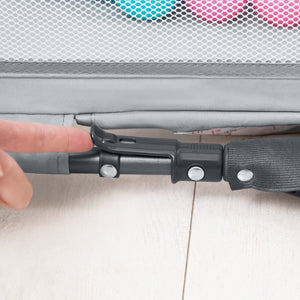
Lock system for stability during use, easily released when folding
Easy Folding, Stable Use
This design ensures a stable and flat surface while in use, and makes folding quick and easy for convenient storage.
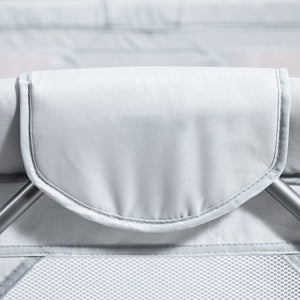
Made with 300D Oxford fabric, premium quality, non-toxic
Safe & Easy to Clean
This material ensures your baby’s safety and can be easily wiped clean, keeping the bassinet fresh and hygienic.
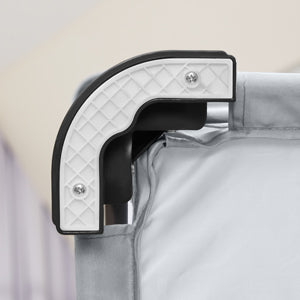
Semi-circular arc base design to increase ground contact area
Sturdy Design, Safe & Reliable
This design enhances the stability of the playpen, ensuring your baby’s safety and security.
FAQ
Yes, playpens can be good for babies when used properly. They offer a safe, contained space where babies can play, explore, and rest without the risk of getting into dangerous areas. Some benefits include:
- Safety: Keeps your baby safe from hazards around the house.
- Independence: Allows babies to play and explore on their own in a safe environment.
- Convenience: Provides parents with a hands-free moment while ensuring the baby is secure.
- Supervised Play: Helps babies develop motor skills and interact with toys in a controlled space.
However, it’s important not to use a playpen as a long-term solution for keeping a baby confined. Babies still need time to be held, interacted with, and have free movement outside the playpen.
- A baby can start using a playpen as early as 6 months old, when they are able to sit up and engage with toys. However, some parents may use a playpen for younger babies (3-4 months) for supervised naps or tummy time.
- It’s important to always ensure that the playpen is safe and appropriate for the baby’s developmental stage, with no sharp edges, small parts, or hazards. Always supervise your baby while in the playpen to ensure their safety.
Yes, it's generally safe for a baby to sleep in a playpen, provided the playpen is designed for sleep and meets safety standards. Many playpens are designed with a flat, firm mattress and breathable sides, making them suitable for napping or overnight sleep. However, there are a few important considerations:
- Flat and Firm Surface: Make sure the mattress is firm and flat. Soft or uneven surfaces can increase the risk of suffocation or Sudden Infant Death Syndrome (SIDS).
- No Pillows or Soft Bedding: Avoid placing pillows, blankets, or stuffed animals in the playpen while the baby sleeps, as these can be choking hazards or lead to overheating.
- Supervision: Always check the playpen regularly for any safety issues, such as broken parts or loose mesh.
- Age Appropriateness: If your baby is younger than 6 months, ensure the playpen is equipped for safe sleep, and consider using a bassinet attachment if available.
As always, it's important to follow safe sleep guidelines, including placing your baby on their back to sleep and maintaining a safe sleep environment.
To keep your baby happy in the playpen:
- Toys: Add age-appropriate toys that engage their senses.
- Engagement: Spend time nearby, talking or singing to them.
- Comfort: Use familiar items like a soft blanket or stuffed animal.
- Short Sessions: Keep playtime brief and fun.
- Music: Soothing music or sounds can calm them.
It’s common for babies to cry when placed in their playpen, especially if they’re not used to it. Here are some possible reasons:
- Separation Anxiety: Babies often cry when separated from their caregiver, especially around 6-8 months, as they develop attachment bonds.
- Need for Comfort: Your baby may prefer being held or cuddled, feeling more secure with you nearby.
- Boredom or Lack of Stimulation: If there aren’t enough toys or engaging activities, your baby might feel bored or frustrated.
- Tiredness or Hunger: Babies might cry if they’re tired, hungry, or need a diaper change, and they can’t self-soothe in the playpen.
- Unfamiliarity: If the playpen is a new environment, your baby might feel unsure or unsettled at first.
- Discomfort: Check if the playpen mattress is comfortable and that the temperature is right. Sometimes babies cry if they feel too hot, too cold, or uncomfortable.
To help reduce crying, try gradually introducing the playpen with short, positive sessions, stay close initially, and provide comfort items like a favorite blanket or toy. Over time, as your baby becomes familiar with it, they may start feeling more comfortable in the playpen.
Babies typically stop using a playpen around 2-3 years old, when they become more mobile and can climb or crawl out. At this age, they may need more space to explore and play. You can transition to a toddler-friendly play area or room with safer boundaries. Always ensure that the playpen is still suitable for your child's development.

